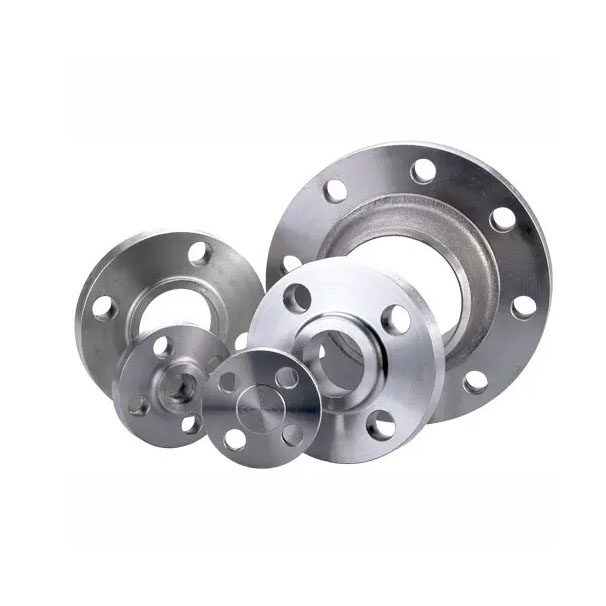Two major preferential anchor flanges
Anchor Flanges combat axial movement. They bear a resemblance to a collar, once it is attached to a pipe. They prevent the pipeline from moving by typically being placed onto a section of the pipeline as it makes a turn or is at a bridge crossing.
A metal pipeline is known for its inherent movement caused by the flow of liquid, as well as contraction and expansion caused by temperature changes. By locking in an Anchor Flange and securing its position, the forces of flow pushing against the pipe are displaced on the earth.
They look similar to a weld neck flange, but it has two hubs on both sides to weld to the pipes. There are no bolt bores on Anchor Flanges and they help secure the position of the pipeline.
Stainless Steel Anchor Flanges: ASTM A182, A240 F 304, 304L, 304H, 316, 316L, 316Ti, 310, 310S, 321, 321H, 317, 347, 347H, 904L.
Carbon Steel Anchor Flanges: ASTM / ASME A/SA 105 ASTM / ASME A 350, ASTM A 181 LF 2 / A516 Gr.70 A36, A694 F42, F46, F52, F60, F65, F70.
Alloy Steel Anchor Flanges: ASTM / ASME A/SA 182 & A 387 F1, F5, F9, F11, F12, F22, F91.
Duplex Steel Anchor Flanges: ASTM / ASME A/SA 182 F 44, F 45, F51, F 53, F 55, F 60, F 61.
Super Duplex Anchor Flanges: ASTM / ASME A/SA 182, A240 F 44, F 45, F51, F 53, F 55, F 60, F 61.
Nickel Alloy Anchor Flanges: Nickel 200 (UNS No. N02200), Nickel 201 (UNS No. N02201), Monel 400 (UNS No. N04400), Monel 500 (UNS No. N05500), Inconel 800 (UNS No. N08800), Inconel 825 (UNS No. N08825), Inconel 600 (UNS No. N06600), Inconel 625 (UNS No. N06625), Inconel 601 (UNS No. N06601), Hastelloy C 276 (UNS No. N10276), Alloy 20 (UNS No. N08020), Titanium (Grade I & II).
Copper Alloy Anchor Flanges: UNS No. C10100, 10200, 10300, 10800, 12000, 12200, 70600, 71500, UNS No. C 70600 (Cu -Ni- 90/10), C 71500 (Cu-Ni-70/30).
Low-Temperature Carbon Steel Anchor Flanges: ASTM A350, LF2, LF3.
Anchor Flanges are used in Chemical and petrochemical processing.
Anchor Flanges are used in electronics.
Anchor Flanges are used in processing equipment for maintaining product purity in handling foods, and synthetic fibers.
Anchor Flanges are used in marine and offshore engineering.
ANSI/ASME:
ANSI B16.5, ANSI B16.47, MSS SP44, ANSI B16.36, ANSI B16.48.
DIN:
DIN2527, DIN2566, DIN2573, DIN2576, DIN2641, DIN2642, DIN2655, DIN2656, DIN2627, DIN2628, DIN2629, DIN 2631, DIN2632, DIN2633, DIN2634, DIN2635, DIN2636, DIN2637, DIN2638, DIN2673.
B.S:
BS4504, BS4504, BS1560, BS10, etc.
Size: 1/2" (DN15) – 100" (DN2500)
Brand Name: EliteFlange
Class: Class 150, Class 300, Class 400, Class 600, Class 900, Class 1500, etc
Specialize: As per the drawing
Required for all code
Design Code
1. Material.
2. Design Pressure.
3. Design Temperature.
4. Installation Temperature.
5. Allowable Concrete Bearing Stress.
6. Corrosion Allowance.
7. Run Pipe Diameter.
8. Run Pipe Schedule Thickness.
9. Other applicable moments and load information.










